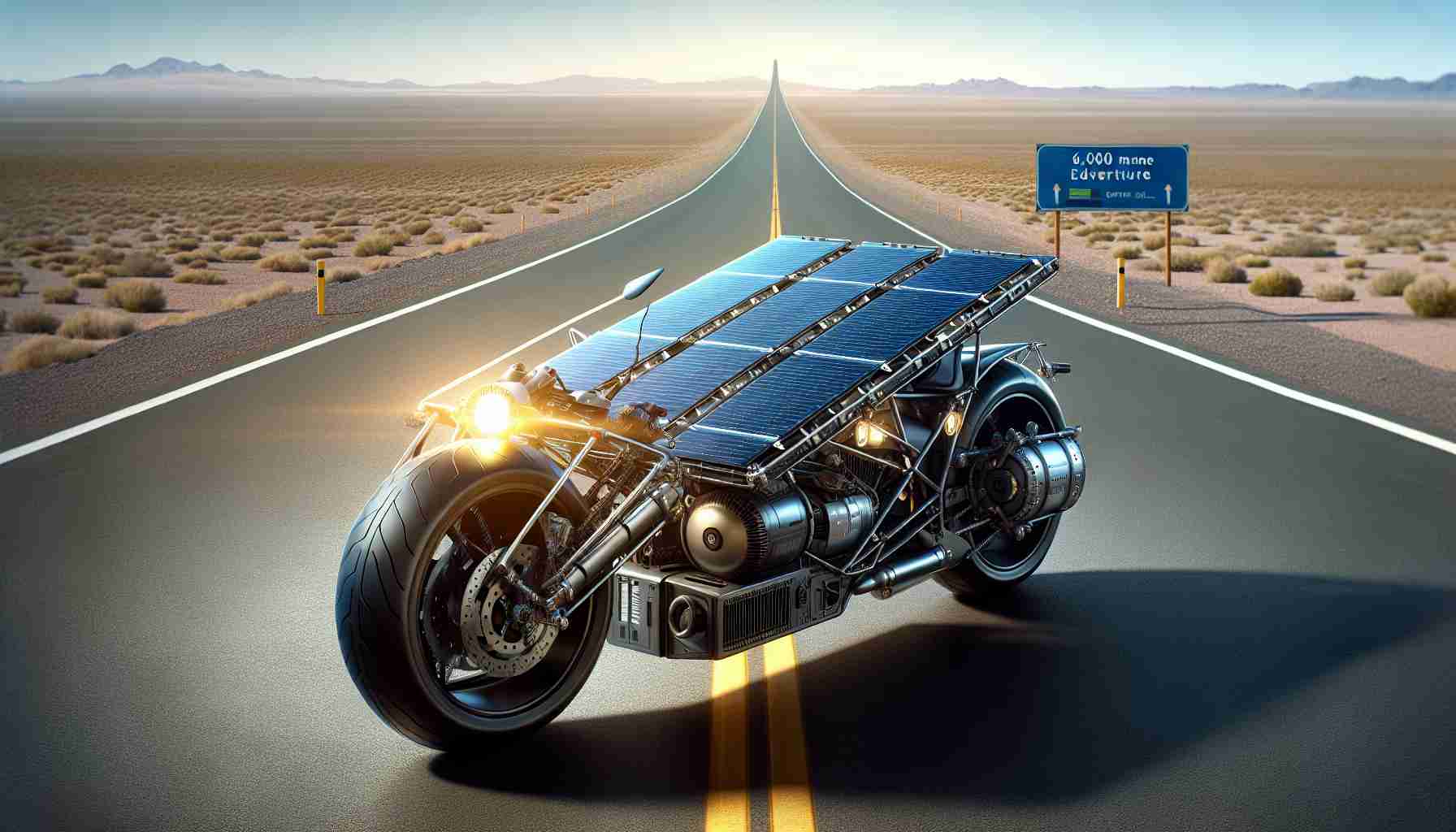In a stunning display of innovation, a solar-powered motorbike completed an incredible 6,000-kilometer (3,700-mile) expedition from Nairobi, Kenya, to Stellenbosch, South Africa, in just 17 days. The journey was accomplished by a motorcycle engineered by Roam, a Swedish-Kenyan tech firm, spotlighting its sustainable energy capabilities.
This significant achievement was made possible as the motorcycle’s batteries relied completely on solar energy, eliminating the need for traditional fuel. A solar panel system installed on a support vehicle recharged the motorcycle’s batteries throughout the long trek.
Breaking new ground in sustainable travel, the Roam Air motorcycle reached unprecedented levels, showcasing a single battery range of 113 km (70 mi). Notably, the final day saw the team cover a remarkable 1,000 kilometers (620 miles) in under 18 hours.
Masa Kituyi, a key Roam product owner who participated in the expedition, emphasized that the journey aimed to revolutionize the approach to travel across sub-Saharan Africa by demonstrating it can be done without the need for existing charging infrastructure. He highlighted their commitment to proving the concept of ‘ride anywhere, charge everywhere.’
Accompanied by Stephan Lacock, a postgraduate student from Stellenbosch University, Kituyi embarked on this ambitious venture on September 29. The journey spanned several countries, including Tanzania, Malawi, Zambia, and Botswana, before concluding triumphantly in Stellenbosch on October 16. The team averaged about 400 kilometers (250 miles) per day, with each battery capable of covering around 80 kilometers (50 miles).
Revolutionary Solar-Powered Motorbike Sparks Debate: Is This the Future of African Transportation?
The recent solar-powered motorbike journey from Nairobi to Stellenbosch might inspire a seismic shift in global transportation, but it raises new questions and challenges. While the completion of this ambitious 6,000-kilometer expedition showcases the potential for sustainable travel across vast, underserved regions, its broader implications are just unfolding.
Expanding Horizons: New Possibilities and Challenges
The journey, initiated by Swedish-Kenyan tech company Roam, underscores a revolutionary concept: transportation independent of traditional fuel sources—and existing infrastructures. This leap could be transformative for communities across Africa, where access to consistent energy and transportation networks remains limited. By utilizing abundant solar energy, these motorbikes can transcend current infrastructure constraints, paving the way for economic growth and improved mobility in remote areas.
However, this visionary approach does not come without challenges. The cost of solar technology remains a significant barrier, potentially limiting access for rural and economically disadvantaged populations who could benefit most. Additionally, there remains a need to develop durable, lightweight solar panels that can withstand the continent’s rough terrains and intense weather conditions.
Interesting Facts and Controversies
One intriguing aspect is the adaptability of the Roam Air motorcycle, which can swap batteries mid-journey. This flexibility ensures continued travel even in the absence of charging facilities—an innovative feature that could render outdated current reliance on stationary charging ports. Moreover, the journey highlighted the vehicle’s potential to travel 1,000 kilometers in just 18 hours, a noteworthy achievement demonstrating the viability of solar power for long-distance travel.
Controversially, critics argue that while the innovation is impressive, its practical application and profitability remain in question. Can solar-powered vehicles truly become mainstream in regions with sporadic sun exposure during rainy seasons? Moreover, at what point do environmental costs, such as solar panel production and battery disposal, outweigh the benefits?
Advantages and Disadvantages
Advantages:
– Environmental Impact: Significantly reduces carbon footprint by eliminating fossil fuel usage.
– Accessibility: Could open up new routes and destinations previously unreachable due to fuel scarcity.
– Economic Potential: Offers new business opportunities around manufacturing, maintenance, and green energy.
Disadvantages:
– High Initial Cost: Initial investment in technology may be prohibitive for many potential users.
– Technical Limitations: Performance in non-optimal weather conditions could limit year-round use.
– Infrastructure Needs: Although less reliant, ongoing support structures, such as maintenance hubs, are still necessary.
Questions and Answers: How Far Can Sustainable Travel Truly Go?
– Can solar-powered motorbikes replace current motor vehicles in Africa?
– While replacement is an ambitious target, solar motorbikes can supplement transportation needs, especially in areas lacking infrastructure.
– Are there plans to scale up this technology?
– Yes, Roam and other innovators are exploring partnerships to increase production and distribution, making the technology more widely accessible.
– What are the socio-economic impacts of such initiatives?
– They could drive job creation in sustainable energy sectors while providing affordable transportation alternatives.
For those more interested in sustainable travel advancements, Renewable Energy World and Climate Action provide in-depth analyses and updates on the latest innovations shaping the future of transportation. As the dialogue continues, it will be crucial to balance innovation with accessibility, ensuring that transformative technologies like the solar-powered motorbike are available to all, shaping a new path forward for transportation globally.







